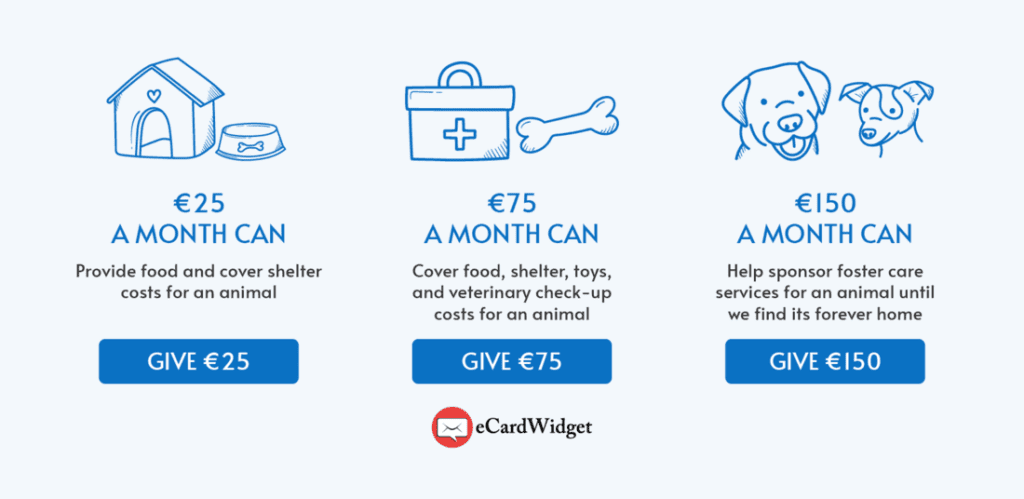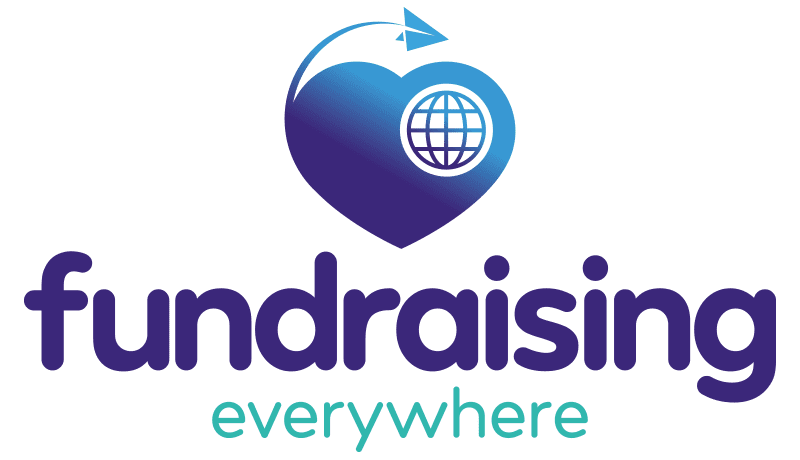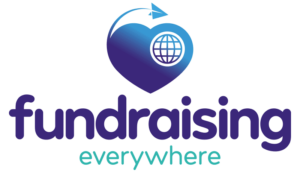
Written by Alin Dinu – Senior Coach at diDo F2F Training
I’m a certified coach with a passion for leadership, communication, and supporting people to find their way. My F2F fundraising journey started with Save the Children in Romania, and since then, I’ve built an agency, designed impactful programs, and worked across Australia, Europe, and the United States.
The main goal behind any face-to-face project – whether in-house, hybrid, or agency – is to secure as many quality sign-ups as quickly as possible. Everyone wins from this, from the field fundraisers to the charities we serve or belong to. To get there, you need to focus on more than just goals and skills; you need a good culture.
What Is Culture?
It’s the set of core values and assumptions that guide your team. Culture shapes the way people interact, solve problems, and behave even when no one is watching. You could say that performance and culture are like a bird’s wings: both are necessary for soaring to new heights.
A poor culture can lead to low morale, backdoor politics, conflicts, tension, and toxic behaviors. So how do you start shifting or building a great culture? Here are two things that have always worked for me:
1. Have Leaders Who Truly Care About Their People – Create Relationships
People are just as important as the results they help produce. Avoid treating your team like mere numbers in an Excel sheet. You could say that results are the golden eggs, while the goose that lays them is represented by your human resources. It can be a big mistake cutting the goose for more eggs.
I remember a time when I managed one of my first teams as a coordinator for an agency. Our client insisted on attending an event without consulting me first, and my fundraisers were not willing to go. Instead of forcing them and risking their morale and trust, I had a difficult conversation with the client. By doing so, we ended the year with around 4,500 sign-ups, a clear sign that caring leadership pays off.
2. Encourage Open Communication
Communication is at the heart of what we do, sharing our stories with potential donors to inspire support for our causes. We speak with care and always set healthy boundaries. Imagine if we practiced the same openness within our own team. When people feel safe to speak up, the benefits are many: increased engagement, fun, personal growth, etc. Whether you’re on the field, in the office, during training sessions, or meetings, effective communication makes a difference.
Focus on truly listening. How? Do this with the intention of understanding, avoid labels like “stupid” or “lazy,” and don’t interrupt the speaker. Let them finish so you can respond thoughtfully. A great way to ease tension is by reflecting their feelings back to them: “It sounds like you’re frustrated because…” or “It seems like you feel it’s not fair…”. Such practices not only build trust but also set the stage for better leadership.
There is an old saying “If man was built to speak instead of listen, he would have two mouths and only one ear”. Listening is at the core of a great communication system.
Of course, aside from open communication and a focus on relationships, there are other things that help you build the culture you desire: focusing on what is within your control, knowing why you are part of the organization, respect, integrity or trusting the process are a few examples.
A strong culture brings countless benefits: lower stress, high morale, low recruitment costs, growth and overall good performance. It all begins with your leaders focusing on relationships and communication.
So, if you want to secure as many quality sign-ups as quickly as possible as an organization, you must focus on your people by creating a powerful culture. Compromising on culture will hurt your performance in the long run.
Want to learn more about face-to-face fundraising?
Join us at our Face-to-Face fundraising Conference 2025.
Voice Your Thoughts 🗣️
Our platform is open to anyone and everyone in the sector that has an opinion, idea, or resource they would like to share to help make our sector better. If you would like write and share something, pop an email over to hello@fundraisingeverywhere.com and we will support you every step of the way to share your voice.

Written by Tim Badolato – CEO at eCardWidget
Tim Badolato is the CEO of eCardWidget.com an innovative platform for digital employee recognition, donor acknowledgment, business marketing, and nonprofit marketing. He has a passion for using technology to drive positive outcomes for mission-driven businesses and nonprofits.
If your fundraising appeals aren’t getting responses, chances are your message isn’t resonating with supporters. The right words can inspire action, turning passive readers into committed donors.
In today’s evolving fundraising landscape, donor expectations are shifting, competition for support is fierce, and economic pressures impact giving. Your message needs to work even harder to stand out. A compelling appeal doesn’t just explain why your cause matters; it forges a connection that makes donors feel invested in your mission.
We’ll show you how to craft appeals that resonate with your audience so your next ask gets the response it deserves.
Tell Stories That Spark Emotion.
People donate based on feelings. While facts inform, emotions inspire action. To produce emotions, aim to connect donations to real people. eCardWidget’s donor retention guide suggests telling donors about the communities they’re contributing to.
In direct appeals, tell individual beneficiaries’ stories. For instance, an animal shelter may share the story of a puppy that was rescued from an unsafe environment, malnourished, and scared. Thanks to donor support, he received urgent veterinary care, a warm place to sleep, and a loving foster home. After a few months of rehabilitation, he found his forever family.
Use donor-centric language to make the donor the hero of your story. For example, don’t say, “Our shelter has helped thousands of animals.” Instead, say, “Thanks to donors like you, thousands of animals have found safe and loving homes.”
This can also be as simple as assigning impact labels to donation amounts. These labels explain the direct impact beneficiaries receive from specific donations. For example, let’s say you work for an animal shelter. You might add these labels to your fundraising appeals:

- €25 a month provides food and shelter for an animal
- €75 a month provides food, shelter, toys, and veterinary check-ups for an animal
- €150 a month sponsors foster care services for an animal
By sharing impactful stories, you show donors the tangible results of their generosity and encourage them to form an emotional attachment to your cause. They don’t just give money; they change lives. Whether it’s a rescued puppy, a family receiving food assistance, or a student gaining access to education, powerful impact stories deepen emotional connections.
Make the Ask Clear, Direct, and Urgent.
Don’t assume donors know what you want them to do. Avoid vague requests and instead spell out their next steps.
End your fundraising appeals with a compelling call to action (CTA) that’s more specific than “Donate now!” For example, a stronger ask would be, “Give £25 today to provide a week’s worth of meals for a struggling family.” Or, for a fundraising auction item procurement letter, encourage businesses to give with CTAs like, “Please donate a gift certificate, gift basket, or local event tickets to raise funds for local families.”
Getting Attention’s copywriting guide suggests only issuing one CTA at a time. Otherwise, you’ll pull donors in multiple directions, resulting in them taking no action. The guide also encourages creating a sense of urgency, but do so without pressure. You could add a deadline by saying, “Our matching gift challenge ends tonight. Donate before midnight to double your donation’s impact,” or “Families need warm meals now—your donation makes a difference today.”
From here, place the CTA prominently in your appeal. In emails, add it toward the top and repeat it strategically throughout the message. For direct mail, make it stand out with bold text, colour, or a well-placed button-like graphic. On social media, keep it concise and follow platform-specific best practices. For instance, place CTAs within the first two lines of an Instagram or Facebook caption before the ‘See More’ cutoff. Use text overlays and verbal callouts early for video content like Instagram Reels or TikToks, then repeat the CTA in the caption.
No matter the format, your CTA should be easy to find and provide specific directions.
Show; Don’t Just Tell.
Featuring images and videos with your appeals will capture real emotions. A close-up of a child smiling after receiving a meal is far more powerful than a generic stock photo of food supplies. Show donors the real people they can help.
When using videos, follow these best practices:
- Keep it short and focused. Donors are more likely to watch your whole video if it’s concise.
- Feature real people. A personal testimonial is often more compelling than facts and figures alone.
- Add captions. Many people watch videos on mute or use assistive technology, so make sure they can follow along without sound.
Before-and-after visuals can also be powerful. A side-by-side image of an empty classroom and the same room filled with students with new school supplies makes your charity’s impact instantly clear.
Experiment With Different Platforms and Formats.
A fundraising appeal is only effective if it reaches the right audience. Meet donors where they are by distributing tailored appeals across multiple platforms. Multi-channel fundraising ensures your message is seen and engages different donor segments.
Experiment with these platforms:
- Email: Personalize subject lines, opening sentences, and donation asks based on donor history and preferences. Tell stories and inspire urgency to drive action.
- Text Messaging: Keep messages short and direct. Use compelling language that encourages immediate donations and follow up with updates.
- Direct Mail: Share emotional stories and visuals that evoke a personal connection. Include a QR code or direct link to an online donation page to make giving easy.
- Social Media: Share impact stories, livestream fundraising events, and leverage user-generated content to create an emotional connection. Launch peer-to-peer fundraisers to expand your reach.
- Advertising: Use targeted digital ads to amplify your appeal. Retarget users who previously visited your donation or event page but didn’t convert.
Choose platforms based on where donors are active. Check their preferred communication channels. For major donors in particular, send personalised email appeals or schedule one-on-one phone calls to form unique, long-lasting relationships.
Monitor your fundraising appeals’ performance across platforms, too. If a channel isn’t driving donations, experiment with different messaging formats or timing to improve engagement.
eCards: A Creative Format to Strengthen Engagement
Stand out in donors’ inboxes by formatting appeals as digital greeting cards. eCards offer a unique way to enhance fundraising appeals by adding an interactive touch. Experiment with these strategies:
- Sell eCards as digital gifts for special occasions, including birthdays and major holidays like Valentine’s Day or Mother’s Day.
- Incorporate them into the tribute donation process, allowing donors to send an eCard when giving in someone’s honour (e.g., “Donate £20 and send an eCard to a loved one letting them know you made a gift in their name.”).
- Use them in peer-to-peer fundraising, empowering supporters to share eCards that promote your mission and encourage others to give.
Check out these eCards from the Seattle Humane Society, which pair fun messages with photos of their rescued animals:

Integrating eCards into your fundraising efforts creates a memorable, donor-centric experience that strengthens engagement, cultivates relationships, and drives donations. Choose a platform that allows donors to send eCards via email, text, or social media to maximise impact.
Even after you’ve sent or posted your fundraising appeals, your work’s not done yet. Follow up to thank donors who gave or remind those who haven’t yet. Continuing the conversation keeps donors engaged in your work and primes them to give again.
Your words can turn interest into impact. Start crafting your appeals and inspiring supporters to give.
Voice Your Thoughts 🗣️
Our platform is open to anyone and everyone in the sector that has an opinion, idea, or resource they would like to share to help make our sector better. If you would like write and share something, pop an email over to hello@fundraisingeverywhere.com and we will support you every step of the way to share your voice.

Want to level up your fundraising game? 📈 We’ve got you covered!
With Fundraising Everywhere Membership, you’ll unlock a world of insights and tools to help you thrive in your role, covering topics like:
- Individual Giving
- Corporate Fundraising
- Legacy & In-mem
- Supporter Experience
- Digital Skills & Tech
- Charity Leadership
- Trusts & Major Donors
- Well-being & EDI
- And so much more!
Here’s what you get with FE Membership:
- Unlimited access to ALL live and on-demand events
No extra fees—just one Membership that gets you into every virtual conference, webinar, training and meet-up we offer.
- Exclusive monthly Member Workshops & monthly Drop ins
Get insider tips and strategies from fundraising experts through our Members-only workshops, designed to help you tackle the challenges you face every day.
- Access to 700+ on-demand sessions in our library
Instant access to a library full of resources, templates, and guides to make your work life easier. - 1:1 Coaching whenever you need it
Whether you’re facing a challenge at work, looking to make a change in your career, or need guidance, our coaches are here to help you navigate it all. - Member Peer Matching
Our Membership is packed with everything you need to grow, so we’re sure your boss will see it as an amazing investment in your personal development! 🌱
Template Email for Your Manager
Hi [manager’s name],
I’d love to buy a paid membership for Fundraising Everywhere, please!
It’s a brilliant resource that offers so much value for fundraisers, including access to live and on-demand events, exclusive webinars, and a ton of helpful resources.
Fundraising Everywhere offers training across the breadth of fundraising from entry level to leadership.
It covers topics like:
- Individual Giving
- Corporate Fundraising
- Legacies & In Mem
- Trusts and Major Donors
- F2F Fundraising
- Supporter Experience
- Leadership
- Digital skills
- ___*insert relevant conference topic here*_______
- And so much more!
Here’s what I’ll get with the Membership:
- Unlimited access to ALL fundraising events and webinars—no extra fees ever.
- Exclusive Member workshops with sector experts.
- A growing On-Demand training library with over 700 sessions and counting.
- A chance to connect with a community of over 2000+ fundraising professionals.
- 1:1 coaching whenever I need it.
- Member peer Match-Making with a large and varied community of fundraisers and marketers
At £25 a month, it’s an affordable way to keep my skills sharp and stay up to date with the latest in fundraising. I’m confident it’ll help me bring even more value to our team and support me in hitting our income target.
Thank you so much for considering!
PS* There’s also an Organisational Membership option that could benefit the whole team if you think it’s worth exploring?
Voice Your Thoughts 🗣️
Our platform is open to anyone and everyone in the sector that has an opinion, idea, or resource they would like to share to help make our sector better. If you would like write and share something, pop an email over to hello@fundraisingeverywhere.com and we will support you every step of the way to share your voice.

Corporate sponsorship can fundamentally transform a charity’s circumstances, offering essential financial resources to succeed and connecting it to valuable community networks. At the same time, businesses enjoy improved brand identity and enhanced employee engagement. Understanding the basics of how corporate sponsorships work, their benefits, and how to get started are critical to determining a strategy for this type of support for your charity.
In this guide, we’ll delve into the essentials of corporate sponsorships to help equip your charity with the knowledge and know-how to secure this transformative support.
What Are Corporate Sponsorships?
According to Double the Donation, corporate sponsorship is “a form of support charities receive from corporations to fund events, programmes, or specific projects.”
Corporate sponsorships can come in various forms, each offering unique opportunities for collaboration and benefits. Here are some common types of such sponsorships:
- Financial grants. Cash sponsorships can directly fund your mission or help support events. For example, a business might purchase a sponsorship for a charity golf tournament, underwriting event costs and boosting fundraising outcomes.
- In-kind donations. These are non-monetary gifts or contributions that assist your charity’s operations or support a specific initiative or event. Examples could include donated spaces for a fundraising gala, new computers or other facility resources, or prizes or catering for a charity golf tournament.
- Employee volunteering programmes. Many companies encourage employees to volunteer for charities by organising outings or providing paid volunteer time off. These programmes support your cause and engage the company’s workforce.
- Cross-marketing. This involves businesses promoting your mission through their marketing channels. For instance, a corporate partner could highlight your charity’s work or fundraising events on their social media platforms or website, reaching a broader audience.
- Employee giving. Many companies encourage employee donations to charity by offering incentives such as matching gifts or volunteer grants, which can significantly amplify individual contributions.
Why Are Corporate Sponsorships Beneficial?
The benefits are numerous, both for the charity that receives the sponsorship support and for the corporate partner themselves. Here’s why they work well for both parties:
Benefits for Charities
- Enhanced mission support. Sponsorships provide financial resources as well as expertise that can help directly advance your cause and mission fulfilment.
- Additional revenue. Sponsorships can help cover overhead costs or provide unrestricted funds, freeing up other sources of funds for mission activities.
- Expanded networks. Corporate sponsorships give your charity access to the sponsor’s networks, which opens doors to new potential supporters and donors.
Benefits for Corporations
- Increased employee engagement. Supporting a charity can provide employees with new gifting and volunteer opportunities that increase employee engagement and boost morale.
- Improved brand awareness and lift. Partnering with a charity enhances public perception of a business and builds positive connections with the community.
- Access to new audiences. When a business collaborates with a charity, it introduces the brand to potential new clients and customers that align with their values.
How Can Charities Get Started With Corporate Sponsorships?
It’s a good idea to start by building a relationship with the sponsor prior to making a formal pitch. You might arrange an informal meeting, such as a coffee chat, to build rapport and help you better understand the sponsor’s interests and motivations (both personally and professionally). A strong relationship significantly increases the likelihood of securing a sponsorship.
Next, create a custom proposal for the sponsor (and tailor it to other sponsorship requests to different businesses). Using insights from your get-to-know-each-other meeting and additional prospect research, you can craft a pitch that hits upon the company’s strengths and interests. It’s a good practice to ask for more support than you need, which leaves room for negotiation, if needed.
Your proposal should highlight the benefits of partnering with your charity. For instance, when proposing that a business sponsor a hole-in-one contest at a charity golf tournament, try to include details such as attendance figures from the last event and anticipated turnout for this year. This positions the sponsorship as a high-value opportunity to boost brand visibility and awareness.
It’s also good to come to the pitch prepared to compromise. Because every business has different strengths and capacity to enact change, you may need to educate potential partners about innovative opportunities to implement corporate social responsibility (CSR) by working with your charity. Continuing with the golf tournament example, a local sporting goods store may not have a large budget to make cash contributions, but may be willing to donate premium golf equipment, clothing, or accessories that can be used as a raffle item. Compromising lays the foundation for future support and builds a strong partnership.
Next Steps
Corporate sponsorships are mutually beneficial partnerships that can revolutionise your charity’s ability to achieve its goals. By understanding the different types of sponsorships and tailoring your approach to potential partners, you can create compelling proposals that inspire companies and corporations to join your mission.
To find potential sponsors, consider networking at local business forums, attending industry events, or leveraging online tools and directories. By taking these proactive steps, your charity will be well on its way to building meaningful and impactful corporate partnerships.
Want to learn more about corporate fundraising?
Join us at Corporate Partnerships Everywhere Conference 2025.
Voice Your Thoughts 🗣️
Our platform is open to anyone and everyone in the sector that has an opinion, idea, or resource they would like to share to help make our sector better. If you would like write and share something, pop an email over to hello@fundraisingeverywhere.com and we will support you every step of the way to share your voice.

With budget constraints being one of the key challenges fundraisers face, many charities are expanding their revenue streams to sustain their missions. Chief among those are corporate sponsorships, which empower charities to attain additional funds and foster long-term relationships with businesses and corporations.
Whether you’re seeking additional funds to power a 5K fundraiser or gauging support for your upcoming capital campaign, corporate sponsorships are a great way to attain that support. Let’s take a quick look at the steps and best practices for securing a sponsorship for your charity.
Understand the Types of Corporate Sponsorships
When fundraisers think of corporate sponsorships, they often think of businesses providing financial support to help charities execute a fundraising event idea. While event sponsorships are a key example, they are just one of many ways businesses can collaborate with charities.
Here are a few other common types of sponsorships:
- Financial: This is the most popular type of sponsorship, where a business offers monetary support to a charity.
- In-kind: The business provides in-kind donations, usually goods or services.
- Media: The business supports the charity through marketing or advertisements.
- Product: The business offers its products to be used or distributed during a charity event or program.
- Program: This is a longer-term partnership where the business sponsors an ongoing charity program or campaign, providing multiple types of support.
Now that you understand the different types of sponsorships, you can request the ones that make the most sense for your charity and potential partners. For example, if you plan on hosting a gala, request a product sponsorship from your local winery if you know they have overstocked vintages.
Identify the Best Corporate Sponsorship Prospects
Finding businesses to request sponsorships from can feel like looking for a needle in a haystack. However, charities don’t need to contact every local business or big corporation they can think of to acquire partnerships. Start by narrowing your sponsorship prospects to the organisations most likely to support your charity.
Look for businesses that:
- Have similar values to your charity
- Operate in your local community
- Work in a similar vertical or industry
- Share target audiences with your charity
- Have a history of corporate philanthropy, which 360MatchPro defines as “voluntary activities or investments in the betterment of society”
Especially if you are a small charity leader, reaching out to your network can prove invaluable in the search for sponsorship prospects. Connect with other fundraisers to discuss businesses they’ve successfully partnered with. Or, ask them to refer you to business owners or executives interested in working with charities.
Set Yourself Up as a Great Sponsorship Candidate
To establish yourself as a reliable sponsorship candidate, you must first understand what businesses get from these partnerships. Generally, their benefits include:
- Access to new or bigger audiences. Businesses can tap into your charity’s audience to increase brand awareness and reach potential new customers.
- Improved reputation. With 77% of consumers wanting to purchase from companies with corporate social responsibility (CSR) initiatives, sponsorships allow businesses to boost their reputations and differentiate themselves from competitors.
- Networking opportunities. Sponsorships usually include networking opportunities with VIPs such as major donors and other key business individuals, which can lead to additional partnerships for your sponsor.
- Heightened employee engagement. Paul Polman’s employee engagement report shows that 66% of U.K. workers and 76% of U.S. employees want to work for companies that positively impact the world. Sponsoring charities shows job applicants that the business is committed to improving the world.
- Tax benefits. Sponsorships usually qualify as charitable donations, resulting in potentially significant tax deductions for the business.
Based on these benefits, make the necessary operational changes that position your charity as a great candidate for sponsorship. For example, you should:
- Develop a strong mission statement that clearly defines your charity’s work.
- Ensure your promotional materials are professional and up-to-date to show how your organisation might market your sponsor.
- Prepare compelling stories about donors, volunteers, and beneficiaries to reinforce your mission’s value.
- Organise your data to qualitatively show your charity’s impact, marketing capabilities, and more.
It’s good to do a baseline preparation that generally sets up your charity to secure sponsorships. However, you’ll likely come across a sponsor who may have different needs unmet by the activities above. In that case, you’ll need to do additional work to demonstrate your value as a partner.
Send Tailored Sponsorship Proposals
Just as you would personalise event experiences to your target audience, you must also personalise your sponsorship proposals to individual businesses. Thoroughly research each business, honing in on its needs and target audience.
Then, in your proposal, highlight:
- Specific sponsorship opportunities. Lay out several specific sponsorship opportunities they’d be most interested in. For example, if your aquarium is trying to acquire a sponsor with a specific interest in ocean fish, highlight your research program on whale sharks or the recently discovered papillated redbait.
- Discuss the value of their support for your charity. Beyond personal gain, many businesses genuinely want to impact their communities positively. Suppose you want to add excitement to your annual walkathon, which generates a significant portion of your charity’s annual income. You could explore creative ideas, such as organising a shoe drive fundraiser or selling t-shirts, as suggested in this Funds2Orgs walkathon guide. Then, convey to potential sponsors how their support will directly enable these innovations, emphasising their role in furthering your mission.
- Highlight the benefits they’ll receive. Create sponsorship tiers that outline the perks a sponsor will receive in exchange for a set amount of funds. For example, $2,500 might get a sponsor a dedicated space on your charity’s sponsorship webpage, a social media announcement, and an email newsletter mention. On top of that, highlight the more specific benefits for the sponsor, such as access to your charity’s audience of over 10,000 email subscribers.
Incorporate compelling visuals, stories, data, and other relevant information that might pique the sponsor’s interest. For example, if the sponsor is interested in working with charities that aid students in need, bring up the results of your recent program aimed at delivering school supplies to underprivileged students.
Additionally, include your contact information and follow-up communication plan in your proposal. This makes it easy for sponsors to reach out to you and gives them an idea of what messages to expect from your charity in the upcoming days.
After a business indicates its interest in the sponsorship you’re offering, it’s time to negotiate the specifics of the partnership and execute the plan. Don’t forget that your relationship doesn’t end after you’ve received the business’s support. With the right approach to stewardship and engagement, you can build a mutually beneficial relationship that lasts for years.
If you’re after more top content like this to power-up your partnerships, check out our Corporate Partnerships Conference 2025 coming up on March 20th.
Voice Your Thoughts 🗣️
Our platform is open to anyone and everyone in the sector that has an opinion, idea, or resource they would like to share to help make our sector better. If you would like write and share something, pop an email over to hello@fundraisingeverywhere.com and we will support you every step of the way to share your voice.
© Fundraising Everywhere.
hello@fundraisingeverywhere.com
+44 333 015 6154
Designed & developed by mtc.




